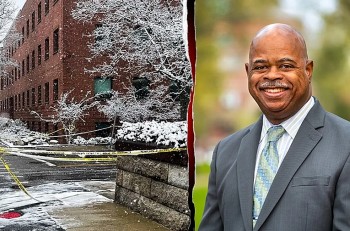Top 10 Poorest States in the USA by Household Income/Poverty Rates
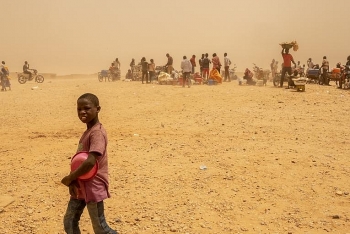 7 Poorest Countries in the World By GNI and HDI 7 Poorest Countries in the World By GNI and HDI |
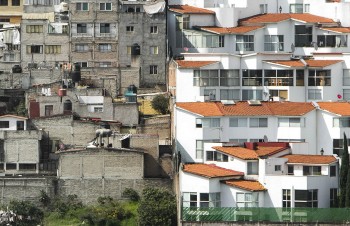 Top 10 Richest and Poorest Cities in the World by GDP (2024 Update) Top 10 Richest and Poorest Cities in the World by GDP (2024 Update) |
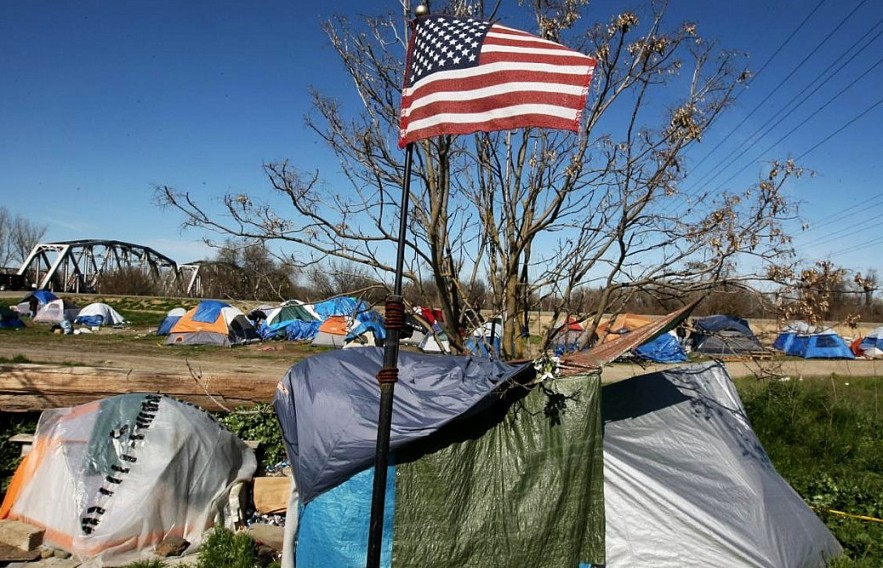 |
| Poorest States In America |
Poverty in the United States
A lot of people in the United States are poor because they don't make enough money, can't find work, or have enough education. Since the Great Depression, people have been trying to help those in need. Programs like the Supplemental Poverty Measure (SPM) help us understand what poverty is like.
Eight million people fell deeper into poverty during the COVID-19 pandemic. This shows that we still need to find effective ways to fight poverty and help people who are having a hard time with money.
Mississippi (19.58%), West Virginia (17.10%), Arkansas (16.08%), New Mexico (18.55%), Louisiana (18.65%), Kentucky (16.61%), Alabama (15.98%), Oklahoma (15.27%), and so on are some of the poorest states in the United States.
List of the US States With the Highest Poverty Rates
1. Mississippi (19.58%)
2. West Virginia (17.10%)
3. Arkansas (16.08%)
4. New Mexico (18.55%)
5. Louisiana (18.65%)
6. Kentucky (16.61%)
7. Alabama (15.98%)
8. Oklahoma (15.27%)
9. South Carolina (14.68%)
10. Tennessee (14.62%)
The U.S. states with the lowest median household incomes often have a lot of economic and social problems that make their low incomes even worse.
A lot of people in these states live below the poverty line, which means that the poverty rate is usually higher. These areas have trouble with their economies because it's hard for people to get a good education, there aren't many high-paying jobs, and unemployment rates are high.
In rural areas, these states don't always have the infrastructure and money to attract big businesses. As a result, people have to rely on low-paying jobs that don't help them move up in the economy. There are more problems for many families trying to get their finances in order when there are higher rates of income inequality and child poverty.
Video - Top 10 States with Highest Poverty In America [Poorest States]
Top 10 Poorest States In The US Based On Median Household Income
The income disparity between some of the poorest states on this list and the national median is almost $20,000, which has a substantial impact on stability and standard of living. This article will explore the realities of these states with the lowest incomes, look at the reasons behind the deflation and how it affects the average resident's quality of life.
We will compare the median household income for each state to the mean, or average. Extremely high or low incomes have the ability to greatly distort the mean, giving us a potentially false impression of the overall state of people's finances. However, the median cannot be distorted in the same way because it is the middle value in a list of numbers.
1. Mississippi: $52,985
Mississippi has the lowest median household income in the country. In 2023, it was $52,985, up from $37,095 in 2012. For some reason, its spot on the list of the 10 poorest states did not get better in that time.
The state of Mississippi has one of the highest poverty rates in the country. It also has a lot of problems with child poverty and income inequality.
The state's poverty rate (19.58%) has gone down over the last ten years, but it is still much higher than the national average (11.5%), and many people in the state work low-paying jobs. More than 19% of the people in the state live at or below the poverty line.
Improving education and creating jobs are two main ways that the state is trying to reduce poverty, but it still has a long way to go.
Another major cause of long-lasting economic problems is not getting enough education. The good news is that the number of students in the state who have completed high school is at an all-time high. The number of high school dropouts went down by 8.5% between 2022 and 2023, and 89.4% of students finished high school.
| Twenty percent of the people in Mississippi are food insecure, which means that one in five people in the state does not have access to enough food or food of good enough quality. This makes Mississippi one of the hungriest states. |
 7 Most Delicious Foods You Must Try in Mississippi 7 Most Delicious Foods You Must Try in Mississippi |
2. West Virginia: $55,217
West Virginia is in the Appalachian region of the US. Its median income is $55,217, up from $40,196 in 2012, and 17.9% of its people live in poverty.
West Virginia moved from No. 3 to No. 2 among the poorest states, but only because its median income went up. It wasn't enough to keep or improve its ranking, and it moved in the wrong direction.
There are about fifteen thousand jobs in the state, and most of them are with the government.
However, West Virginia's reliance on the mining and energy industries has become a weakness over the years as the prices of energy and coal have gone down. It has been hard to get more renewable energy on the market because many people in West Virginia see it as competition for the coal industry.
The state's economic problems are made worse by high unemployment rates and bad health outcomes. Initiatives that aim to create more jobs and make it easier for people to get an education are necessary for West Virginia's economy to grow.
The state has also had trouble with its infrastructure. Things like roads, bridges, and drinking water systems that were built in the last 70 years are still getting old.
West Virginians have had trouble making repairs and updates because the number of people living there is going down. This drop means that the state has fewer tax dollars to fix things that need fixing and fewer chances to move forward.
 Top 10 Best Hospitals in West Virginia 2024 - 2025 by Healthgrades and U.S. News Top 10 Best Hospitals in West Virginia 2024 - 2025 by Healthgrades and U.S. News |
3. Arkansas: $56,335
The median household income in Arkansas, which is in the central southern US, is $56,335, making it the third poorest state.
Even though Arkansas's economy has grown over the past ten years, the 16.8 percent poverty rate is still a big problem. A lot of families are struggling to meet their basic needs because they live close to the poverty line.
Agriculture brings in $16 billion for the state, making it the state's biggest industry. Forestry is also a big business, since 56% of land is forest.
Unfortunately, most of the jobs in these fields pay very little, which makes the median income even lower. Arkansas's complicated economic situation is also partly caused by people not being able to get good education and health care.
In Arkansas, it will be very important in the coming years to make it easier for people to get a good education and affordable housing. Children will likely continue to live in poverty and income inequality will be a big problem in the state until these problems are fixed.
4. Louisiana: $57,852
Louisiana is a state in the southern US. The average household income there is $57,852.
Even though the median income went up, the state is still one of the poorest because 18.6% of its people live in poverty and there is a big difference between rich and poor.
59% of people who live in rural areas of the state are either below the poverty line or can't meet their basic needs. This crisis is mostly happening in rural areas.
Some of Louisiana's biggest industries are chemical and energy products, and manufacturing makes up about one-sixth of the state's GDP. Because of changes in the global market, these things have led to economic crises. Like in other states on this list, poverty and low wages have been caused by a public school system that isn't working well.
Many residents have problems because they can't find affordable housing or jobs that pay low wages. There aren't enough rental homes in the state that are both affordable and open to people with very low incomes.
Louisiana's poverty rates are also affected by differences in geography and income. If lawmakers and other people who can make changes want to reduce poverty in Louisiana, they will need to deal with these problems through targeted policies and economic development programs.
5. New Mexico: $58,722
New Mexico is in the southwestern US. The median household income is $58,722, up from $42,558 in 2012, and 17.6% of the people who live there are living below the poverty line.
With this number in mind, it's clear that Native Americans in the state are much more likely to be poor and have trouble with money. A lot more Native Americans—31%—than people in the rest of the state live in poverty.
A lot of people in the state depend on jobs in the public sector; about one in five workers is in the public sector. One of the main reasons why New Mexico's economy is unstable and people are poor is its education system.
About 77% of high school graduates do not go on to college, and only 70.9% of adults can read and write well. Many adults are stuck in low-paying jobs because they didn't finish school or learn how to read and write. This limits their career options and makes more people homeless and hungry.
Low-paying jobs, a lot of poor children, and big differences in wealth are all problems in New Mexico. Only New Mexico has a bigger difference between its high-income and middle-income households—3.2 times bigger than any other state.
To reduce poverty in New Mexico, things like making schools better and making more jobs available are being done. The state also tries to fix health disparities and make life better for its citizens.
 Top 10 Best Car Insurance Companies In New Mexico - Cheapest Quotes Top 10 Best Car Insurance Companies In New Mexico - Cheapest Quotes |
6. Alabama: $59,609
Alabama is in the middle of the US South. The median household income there is $59,609, up from $41,574 in 2012. In the state, 16.2% of people live below the poverty line.
That being said, Alabama's people still have low incomes and a high poverty rate (16.2%). A lot of people in the area depend on jobs in the public sector and have trouble getting good healthcare and education. There are big wage gaps in the state and a lot of children living in poverty (22.2%).
A lot of the state's unfairness comes from its history in farming, which includes slavery, racial discrimination, and segregation.
The state, which used to depend a lot on cotton plantations, was in charge of enslaving a lot of Africans. In fact, nearly half of Alabama's people lived as slaves at one point in the 1800s.
To reduce poverty in Alabama, things like creating more jobs and giving people more chances to go to school are being worked on. For instance, the Alabama Commission on Higher Education is in charge of six state-funded programs that help students get money for school.
Learn more: Top 10 Best Car Insurance Companies In Alabama - Cheapest Quotes
7. Kentucky: $60,183
Kentucky, which is in the east-south-central part of the country, has the seventh lowest median household income in the country. It rose from $41,724 in 2012 to $60,183 in 2013.
The state's economy is always having trouble, and a lot of families live below the poverty line. The poverty rate in Kentucky is still high (15.8 percent), and there are big differences in how much money people make in different parts of the state.
Kentucky depends a lot on the coal mining and manufacturing industries, which has made things hard in recent years as the state slowly moves toward renewable energy. Also, because of climate change, droughts last longer and floods happen more often, which lowers the yields of crops like corn and tobacco.
Since farming is one of Kentucky's main industries, this cut has had a big effect on the state's economy. Kentucky is often near the bottom of the states when it comes to K–12 education, student performance, and funding. This has an effect on household income levels in the long term.
To help reduce poverty in Kentucky, efforts are focused on making it easier for people to get a good education and encouraging economic growth in the state's most remote areas.
The state also wants to improve health outcomes and lower childhood poverty through a number of social programs. For example, the Kentucky Transitional Assistance Program (KTAP) helps parents find work while also giving kids money and medical care.
 Top 10 Best Hospitals In Kentucky 2024/25 by Newsweek, US News/Healthgrades Rankings Top 10 Best Hospitals In Kentucky 2024/25 by Newsweek, US News/Healthgrades Rankings |
8. Oklahoma: $61,364
The median household income in Oklahoma, which is in the southwest of the US, is now $61,364, up from $44,312 in 2012.
Since the state of Oklahoma became a state, people have lived in poverty because of long-lasting droughts, a lack of resources, and bad infrastructure. 15.7% of people in the world live below the poverty line right now.
Unemployment and a lack of good job opportunities are one of the things that contributes to this unstable economy and poverty. Unemployment rates are much higher for people of color and people who live in Eastern Oklahoma.
A median wage that puts people below the poverty line is also earned by almost one-third of workers. There are problems with the education system that are linked to unemployment and low wages. Oklahoma is one of the states that spends the least on education per student, which means that the infrastructure for schools isn't taken care of.
To make the state's economy better, things like encouraging job growth, investing in renewable energy, and giving people resources for starting their own businesses are all being done.
9. South Carolina: $63,623
The median household income in South Carolina is $63,623. It is in the coastal southeastern part of the United States.
There are 14% of people who live below the poverty line. Low wages, a lack of affordable housing, higher natural disaster risks, and an unequal K–12 education system make it hard for many people to make a living in the state.
In South Carolina, the quality of the public school system varies a lot depending on the neighborhood and where you live. This keeps people born in low-income neighborhoods in a cycle of poverty.
Also, the state doesn't have enough rental homes that are affordable for low-income families. As a result, some families have to spend more than half of their wages just on housing. Because of this, renters often have to cut back on other costs, like health care and healthy food.
Learn more: Top 10 Best Hospitals In South Carolina 2024 By US News and Healthgrades
10. Tennessee: $64,035
The median household income in Tennessee is now $64,035, up from $42,764 in 2012. This makes it the poorest state in the union.
The poverty rate in Tennessee is 13.3%, which is the lowest on this list but still higher than the overall rate of 11.5% in the United States.
Poverty varies a lot from country to country and is usually worse in rural areas. One big difference is that only 3% of children in Moore Country live in poverty, but 45% of children in Hancock do.
These differences in geography also show up in school performance and literacy rates. For example, kids from poorer counties are only half as likely as kids from wealthier counties to read at a level 4 or higher. In these counties, low wages and poverty persist because not all students have the same chances to go to school.
Building more jobs, making education better, and helping low-income families more should be the main goals of efforts to reduce poverty in Tennessee. Child poverty is something the state wants to get rid of through specific social programs like TANF (Temporary Assistance for Needy Families) and WIC (Women, Infants, and Children).
Lean more: Top 10 Best Hospitals In Tennessee 2024 By Healthgrades and U.S News
In Conclusion
To summarize, analyzing the ten most impoverished states in the United States provides a stark understanding of the actualities of economic adversity experienced by millions of households.
The most economically disadvantaged states in America encounter obstacles such as disparities in income distribution and a scarcity of employment prospects. To effectively address poverty, it is necessary to allocate resources towards education, healthcare, and economic development. Effective implementation of solutions and creation of opportunities for all residents require collaboration among the government, private sectors, and communities.
By recognizing and addressing these inequalities, we can strive to create a fairer society where every person has the opportunity to succeed, regardless of their location or socioeconomic status.
FAQs
What is the current poverty rate in the United States?
The United States is among the most affluent countries worldwide. The country has a population of 37.9 million, with approximately 11.5% of its inhabitants living in poverty.
How is poverty measured in the United States?The two federal poverty measures in the U.S.
Every year, the U.S. Census Bureau uses two methods to figure out how many poor people there are. The official poverty level and the supplemental poverty level are both based on guesses of how much money is needed to meet basic needs. People who live in households that make less than those amounts are considered to be poor.
The official and supplemental measures of poverty are both yearly estimates based on a small group of U.S. households. The Annual Social and Economic Supplement (ASEC) to the Current Population Survey (CPS) was sent to about 95,000 homes in all 50 states and the District of Columbia in 2016.
What is “deep poverty”?Data on those with incomes below 50 percent of poverty thresholds
The U.S. Census Bureau says that someone lives in "deep poverty" if their total cash income is less than half of the poverty line. The Census Bureau says that in 2021, 20.03 million people lived in real poverty. People living in deep poverty made up 6.2% of the population and 48.4% of people who were poor.
Different types of households have different poverty levels. In 2021, a single person under 65 years old would be considered deeply poor if their income was less than $7,049 a year. It would cost $13,740 for a family of four with two kids.
Who lives in deep poverty?
Data from the Census Bureau show that more children under 18 than adults of any other age group live in extreme poverty. There were 7.2% of children living in deep poverty in 2021. On the other hand, only 4.2% of people over 65 lived in extreme poverty that same year.
Based on race and Hispanic background, American Indian or Alaska Native people were 10.3 percent more likely to be living in deep poverty in 2021 than anyone else. The rates for Black people were 9.3 percent and for Hispanic people they were 7.9 percent. People who are White and not Hispanic are the least likely to live in deep poverty. In 2021, those rates were 4.8% and 3.9% among White people.
How does family structure relate to poverty?
In 2014, 15% of people lived in poverty. In the United States, about 1 in 12 families were living in poverty. Rates of poverty varied by type of family, ranging from 6% to 31%.
The poverty rates by type of family were:
- 6% of married couple families were poor
- 16% of families with male householder, no wife present were poor
- 31% of families with a female householder, no husband present were poor
Looking at how the types of poor families are spread out compared to the whole population is another way to think about the link between poverty and family structure.
By that measure, single parent households (male or female householder, no spouse present) made up a bigger share of poor families in 2014 than they did in the general population. Married couple households, on the other hand, are underrepresented.
How does geography relate to poverty?Data for regional and concentrated poverty
In 2015, the Census found that 11.7% of people living in poverty were in the Midwest, 12.4% were in the Northeast, 13.3% were in the West, and 15.3% were in the South. The South has the most poor people of any region in the U.S. because it has the most people living in poverty.
The poverty rate is also different in cities and towns that aren't cities. In 2015, 13% of people living in metropolitan areas were poor, while 16.7% of people living in non-metropolitan areas were poor. But because there are so many more people living in metro areas, they had almost five times as many poor people as non-metropolitan areas.
Not everyone did as well in the most recent Census report on poverty. People who live in rural or other non-metropolitan areas did not do as well. From 2014 to 2015, the poverty rate went down by 1.5 percentage points in metro areas, but it went up a little outside of metro areas, from 16.5 to 16.7 percent.
 5 Zodiac Signs Born To Be Poorest and How to Get Out Of Poverty 5 Zodiac Signs Born To Be Poorest and How to Get Out Of Poverty Which is the poorest in all 12 zodiac signs? Interesting facts will be revealed in this article, helping you better understand your zodiac sign so ... |
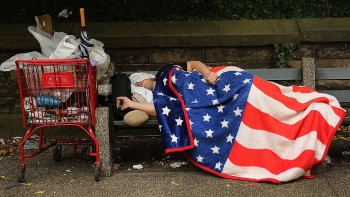 Top 10 States With Highest Poverty Rate In The US Top 10 States With Highest Poverty Rate In The US Do you know which state is the poorest in the US? If not, check out the article below to learn more about the poverty in ... |
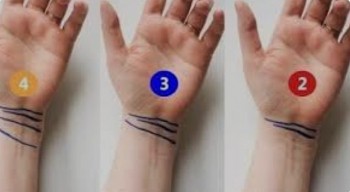 Wrist Lines Revealing Your Destiny: Happiness or Suffering, Wealth or Poverty Based on Physiognomy Wrist Lines Revealing Your Destiny: Happiness or Suffering, Wealth or Poverty Based on Physiognomy According to physiognomy, not only the hand but also the lines on the Wrist can predict your fortune in life, including money, love, career, and ... |
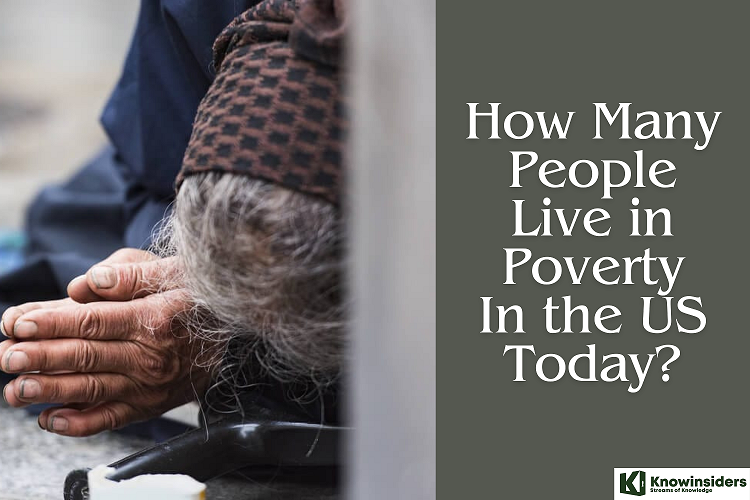 How Many People Live in Poverty In the US Today? How Many People Live in Poverty In the US Today? As of the latest reports, about 37 million Americans live in poverty, representing approximately 11.4% of the population. This figure underscores the significant number of ... |













